Dealing With Rising Cost in Your Business
As the country’s interest rates rise, so too do the costs for businesses.The spike in inflation (recorded at 5.1% in Q1 of 2022) could provide additional challenges for unprepared businesses across the country. Understanding how and preparing your business for the impact of inflation is an important element of business planning that should be addressed as soon as possible.
Given that there is no expected expiration for how long the current inflation rate will apply, this is something that you may need to plan for in the long term.
Common issues that can impact small businesses as a result of inflation include:
- Increased costs of materials and stock (which can then take months to arrive)
- Fixed-price contracts failing to take into account these costs
- Increased shipping costs
- Increased employee costs, with inflation also applying to wages
While raising prices to address these costs might seem like an immediate solution, it can have a negative impact to customer relationships. The following are simple methods in which your business can address inflation (without potentially alienating customers).
Know Where Money Is Currently Being Spent
Knowing where the money of your business is currently being spent and who in turn is spending it is critical in knowing about how your business is currently sitting, expense-wise. In an inflationary period, it is critical to establish repeatable, end-to-end, actionable visibility of spending by cost category, business process, function, and business unit. You may want to discuss this with your trusted business adviser, who may be able to help you identify these elements better.
Know The Difference Between Strategic & Non-Strategic Spending
One of the key steps is to clearly distinguish between strategic and nonstrategic cost-cutting, the protecting of your signature customer and employee experiences, and fiduciary requirements, for example.
This may involve determining whether the spending for the business is:
- A committed cost, which is spending that is necessary for the business’s operational structure on a long-term basis. E.g. Rent, salaries, etc
- A discretionary spend, which is spending that is not deemed as critical to the running of the business and which can be examined/ altered as required. E.g. marketing costs, holiday parties, event tickets, and tuition reimbursement
Rather than completely cut the costs of some of these discretionary spends though, you may be able to consolidate what’s left. Combine activities like training days and celebrations into single events, or combine events across multiple departments. You could also cross-schedule the use of outside resources, such as facilities or trainers.
Why Are You Spending X Amount Here?
Why are you spending money in an area that costs too much to run? Knowing the drivers of cost can add up in an inflationary environment to a better understanding of how your business could improve. You should understand the rate that you are currently paying and your consumption for critical cost categories. This is again something that can be discussed with your business adviser.
Doing so should allow you to tailor your business’s approach to inflation by matching current expectations and challenges. This might include addressing issues in purchasing due to the supply chain and produce pricing pressures by choosing ways that allow you to spend better.
Eliminating Work & Implementing Automations
With labor shortages and ballooning labor costs, eliminating the work itself has the greatest impact. This can be done by scrutinising what activities are being performed, how those activities are being performed and what might be easily eliminated through automation.
You may be able to provide services on an optional basis (opt-in versus opt-out), create better processes for your staff to maximise productivity and their value and automate through technologies to free up current staff for other duties.
Here are just a few of the business processes you can automate easily:
- Contract creation and renewals
- Invoices
- General ledger entries
- Purchase orders
- Collections
- Inventory
- Shipping
- Sales and marketing
Lower Your Supply Chain Risk
To further hedge against inflation, it is suggested to keep an eye out for tendencies that might make your small business more vulnerable to supply chain disruptions, such as:
- Over-reliance on single suppliers
- Overseas suppliers that require a long lead
- Materials that are challenging or costly to store
- A single commodity representing more than 10% of the cost of goods sold
To lower your supply chain risk, try the following:
- Create backup supply chains
- Search for domestic alternatives to overseas suppliers
- Stock up on core supplies with minimal storage costs
- Hedge commodities where appropriate
Thank you for reading!
Should you have any queries in regards to the above please contact our office on (03) 9728 1448
The TAS Team
3/653 Mountain Highway, Bayswater VIC 3153
Dorothea Farmakis (CPA)
Director
Dorothea, our CPA Qualified Accountant (Registered Tax Agent), has over 25 years experience within international corporate firms in Accountancy, Funds Management and Asset Management for firms such as HSBC, P&O, Lend Lease and more.

